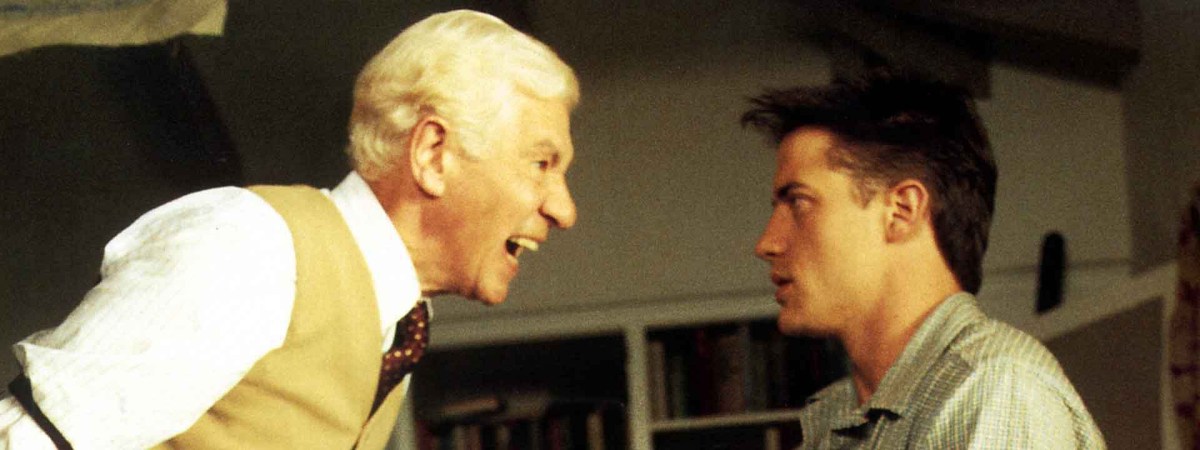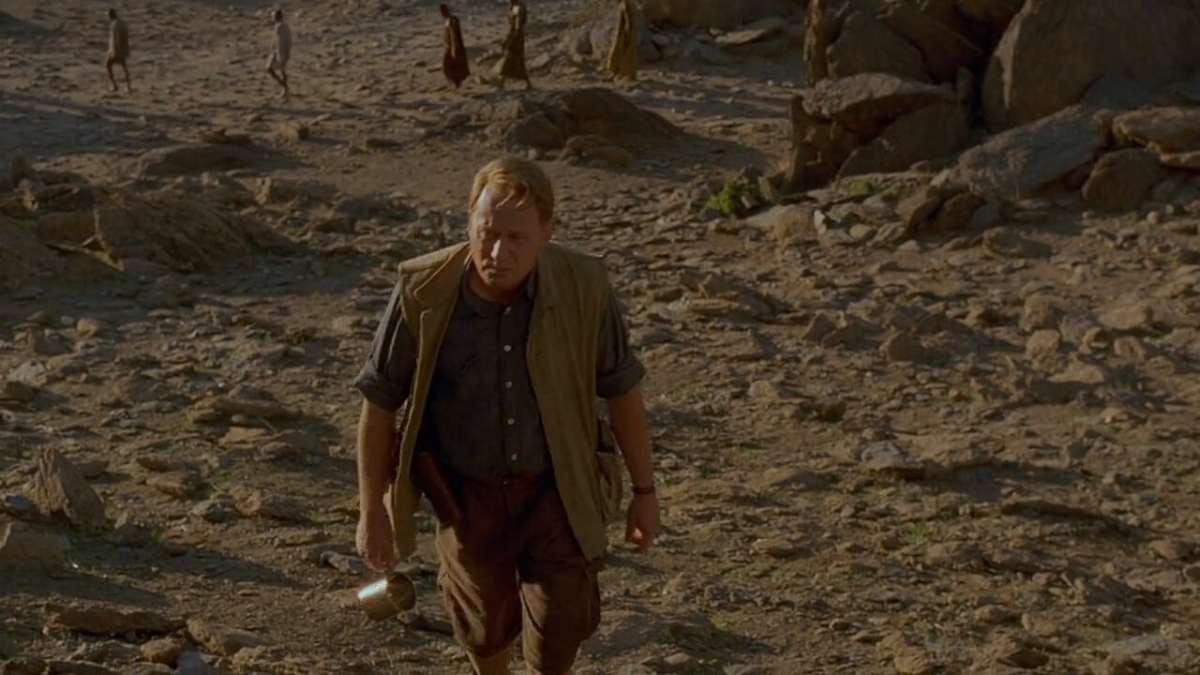‘God was with him’: Actor James Woods describes harrowing wildfire – “God was with him”: Actor James Woods describes harrowing wildfire. This phrase encapsulates the core of Woods’s dramatic account of surviving a devastating wildfire. His story blends personal struggle with profound spiritual reflection, raising questions about faith, resilience, and the power of narrative in the face of disaster. We’ll explore his harrowing experience, examining the details of his escape and the interpretations surrounding his declaration of divine intervention.
Woods’s narrative details a terrifying fight for survival against overwhelming odds. He vividly recounts the physical challenges, the emotional turmoil, and the moments he felt a higher power guiding him. We’ll analyze his account, considering both religious and secular perspectives on his interpretation of events, exploring alternative explanations and the role of faith in crisis management. The media’s portrayal and public reaction to his story will also be examined, highlighting the diverse interpretations of his experience.
James Woods’ Wildfire Escape and the Role of Faith

Actor James Woods shared a harrowing account of his wildfire experience, attributing his survival to divine intervention. This article analyzes his narrative, exploring the different interpretations of his statement “God was with him,” the role of faith in crisis, media representation, and the power of narrative in communicating such traumatic events.
James Woods’ wildfire escape story, where he credits divine intervention, really highlights the unpredictable nature of life. It makes you think about how fragile things can be, a stark contrast to the controlled chaos of a football match like the one analyzed in this Barcelona 2-0 Athletic (Jan 8, 2025) Game Analysis – ESPN piece. Woods’ experience reminds us to appreciate the small things, even amidst the intense drama of life, much like the intensity of a football game.
James Woods’ Wildfire Experience, ‘God was with him’: Actor James Woods describes harrowing wildfire
Woods’ account details a near-death experience during a wildfire. He describes facing intense heat, flames, and the immediate threat of being overtaken by the fire. Specific moments of perceived divine intervention include escaping through a narrow gap in the flames, seemingly miraculously avoiding injury, and finding refuge in a place that provided unexpected protection. The emotional impact is palpable in his description of fear, desperation, and the overwhelming sense of relief and gratitude upon surviving.
Physically, he faced extreme heat, smoke inhalation, and the constant danger of being burned alive. The details of his escape are portrayed as a series of near misses, each emphasizing his vulnerability and the perceived improbability of his survival.
Interpretations of “God Was With Him”

The phrase “God was with him” can be interpreted literally, as a testament to divine intervention, or metaphorically, as a representation of luck, resilience, or the power of human will. From a religious perspective, the phrase suggests a direct intervention of God, protecting Woods from certain death. Examples supporting this interpretation include his escape through the narrow gap and his finding unexpected shelter.
Secular interpretations might focus on Woods’s survival skills, fortunate circumstances, or simply the unpredictable nature of wildfires. Alternative explanations could include the unpredictable behavior of wildfires, the presence of firefighters, or even pure chance. The narrow escape could be explained by unpredictable wind shifts or a momentary lull in the fire’s intensity.
The Role of Faith in Crisis
Woods’ experience illustrates how faith can serve as a powerful coping mechanism during traumatic events. This section compares faith-based coping strategies with secular approaches, analyzing their emotional and psychological effects.
| Coping Mechanism | Faith-Based Example | Secular Example | Observed Effect |
|---|---|---|---|
| Finding Meaning | Attributing survival to divine intervention, finding purpose in the experience. | Focusing on personal resilience, learning from the experience, finding strength in oneself. | Increased sense of purpose, reduced anxiety, potential for post-traumatic growth (both). Faith-based may offer quicker comfort, but secular may lead to greater self-reliance. |
| Emotional Regulation | Prayer, meditation, reliance on religious community for support. | Therapy, support groups, mindfulness techniques. | Reduced stress, improved emotional stability (both). Faith-based may provide immediate comfort, while secular may offer long-term coping skills. |
| Seeking Help | Seeking solace and guidance from religious leaders or community. | Seeking professional help from therapists, counselors, or emergency services. | Access to support networks and resources (both). Faith-based may provide a sense of belonging, while secular may offer more structured interventions. |
Relying on faith can offer comfort and hope, but it may also hinder seeking professional help or accepting responsibility for one’s actions. Secular coping mechanisms, while potentially lacking the immediate comfort of faith, may offer more sustainable long-term strategies for managing trauma.
James Woods’ wildfire escape story, where he said “God was with him,” highlights the power of faith in crisis. It’s a stark contrast to the calculated strategy and intense competition seen in sports, like the Barcelona versus Athletic match, which you can check out in this detailed analysis: Barcelona 2-0 Athletic (Jan 8, 2025) Game Analysis – ESPN.
Both situations, however, emphasize the unpredictable nature of life and the importance of resilience.
Media Representation and Public Reaction
The media largely focused on Woods’s account of divine intervention, highlighting his use of the phrase “God was with him.” Public reaction was varied, ranging from strong support for his faith-based interpretation to skepticism and criticism. Some praised his resilience and faith, while others questioned the attribution of his survival solely to divine intervention. The media’s framing of the event, emphasizing the religious aspect, likely influenced public perception, leading to polarized opinions.
A visual representation of public sentiment could be depicted as a spectrum, with strong support at one end, strong criticism at the other, and a large portion of the population somewhere in between, reflecting a range of opinions and interpretations.
The Power of Narrative in Crisis Communication

Woods’ narrative is structured chronologically, building suspense and emphasizing his near-death experiences. The use of religious language and imagery strengthens the narrative’s emotional impact, reinforcing his faith-based interpretation. Compared to secular accounts of similar events, Woods’ narrative emphasizes the miraculous, while other accounts might focus on human resilience, resourcefulness, or the role of emergency services. Woods’ narrative contributes to broader conversations about faith, survival, and disaster response, highlighting the diverse ways individuals cope with and interpret traumatic experiences.
Last Point
James Woods’ wildfire ordeal offers a compelling case study in the human response to trauma. His account, framed by his faith, prompts reflection on the role of belief in navigating crises. While interpretations of his experience vary, his story underscores the enduring power of narrative in shaping our understanding of disaster, survival, and the search for meaning in the face of adversity.
The debate sparked by his statement highlights the complex interplay between personal faith, public perception, and the diverse ways individuals cope with life-threatening situations.
Question Bank: ‘God Was With Him’: Actor James Woods Describes Harrowing Wildfire
What specific actions did James Woods take during the wildfire?
This requires access to the original source detailing James Woods’ account. The provided Artikel doesn’t specify his actions, only that he faced physical challenges and felt God’s presence.
Actor James Woods’ harrowing wildfire escape story, where he credited divine intervention (“God was with him”), reminds us of the unpredictable nature of life. It’s a stark contrast to the structured world of professional football, like checking out the latest on Red Raiders in the NFL: Week 18 – Texas Tech Red Raiders , where you can at least predict game days.
But even in the controlled environment of a football game, there’s always an element of chance, much like Woods’ survival, highlighting how even in different contexts, faith and fortune can play significant roles.
What was the public’s overall reaction to Woods’ statement?
The Artikel suggests a range of reactions, from strong support to strong criticism, depending on individual beliefs and perspectives.
Did any other celebrities share similar experiences of faith during crisis?
This question requires additional research beyond the scope of the provided Artikel.
What are some secular explanations for Woods’ survival?
Possible secular explanations could include luck, quick thinking, effective emergency services response, or a combination of factors independent of divine intervention.
